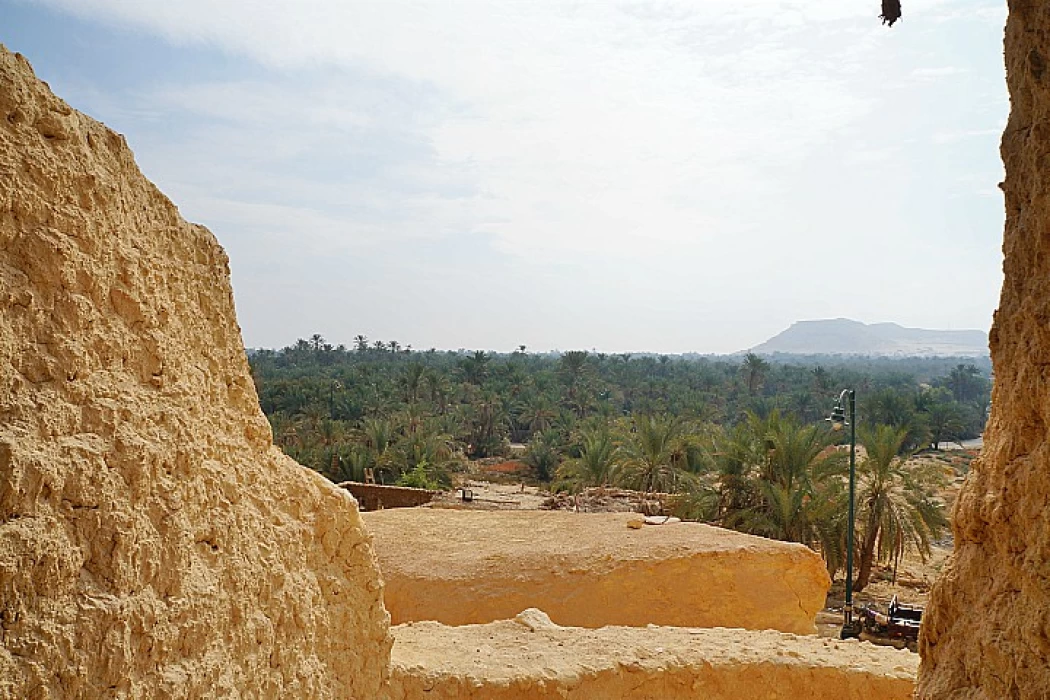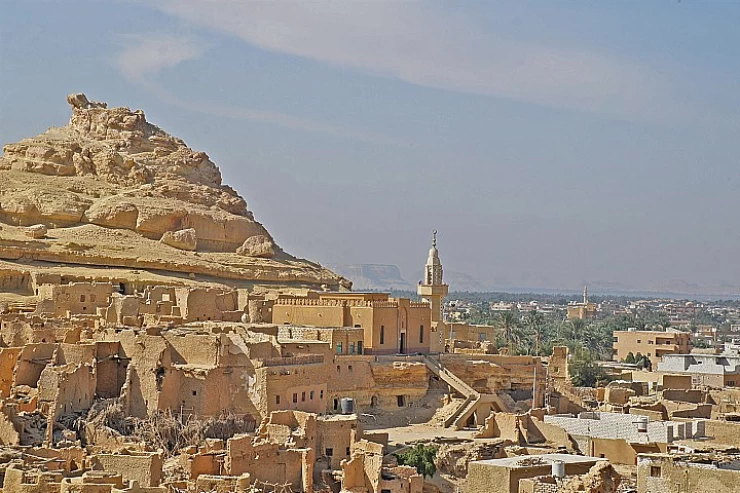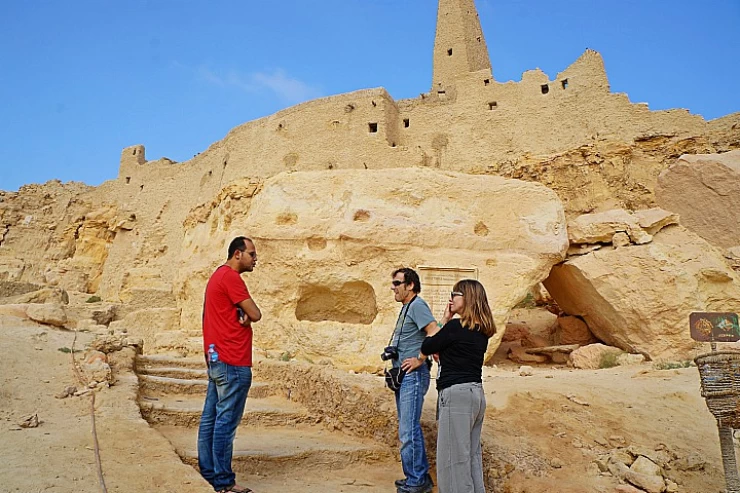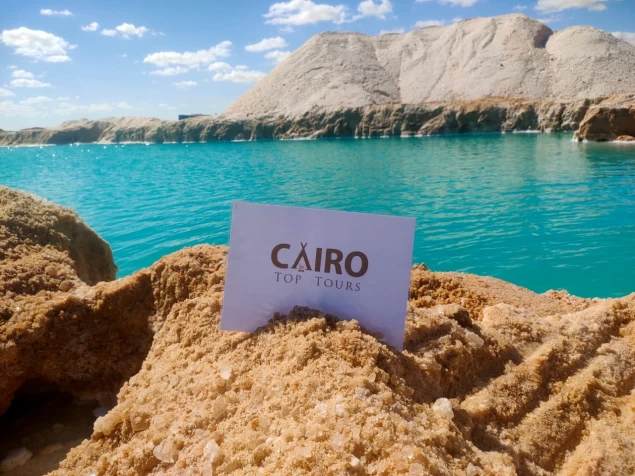
Temple of the Oracle of Amun
Temple of the Oracle at Siwa Oasis
Mixed with legend and mystery. This temple sits atop Agurmi Hill, giving it a privileged view of the oasis that was once an important religious and spiritual center for the ancient Egyptians and Greeks.
History of tombs
In the 26th Dynasty of Egypt, around the 6th century BC, the Temple of the Oracle of Amun was built. At this time, Egypt was ruled by the Sawi pharaohs. It is famous for the trip that Alexander the Great made in 331 BC to endorse his belief in a divine line with the temple's priests informing him that he was the child of the god Amun, bringing legitimacy as ruler of Egypt as documents claim to him. In this temple, there are quite a few legends; the most famous is about a lost army of fifty thousand warriors sent by the King of Persia, Cambyses II, in 525 B.C.
To destroy the temple to prove to the Egyptians and Greeks the corruption of their faith and belief towards the predictions associated with the temple.
Strangely enough, Cambyses' army was completely lost after it departed for the Siwa Oasis, and historical documents state that the army was buried under the sands of the desert after being confronted by violent winds.
An important historical event is the visit of Alexander the Great, one of the most important events that earned the temple its fame, in 331 BC, so that he could be crowned the son of Amun, so that the Macedonian leader could get closer to the Egyptians, as they were known to be associated with their belief, and Alexander asked the temple priests to predict the fate of his future military campaigns and whether he would rule the world or not. Their answer was yes, but not for long.
The structure of the temple
Built using huge blocks of limestone, the Temple of the Oracle of Amun features a series of rooms and halls that were used for sacrifices and priestly predictions.
Although the temple has been damaged by erosion and destruction through the ages, its ruins still keep part of its ancient inscriptions that tell some of the secrets of the past.
The temple's spiritual and historical role
The Temple of the Oracle of Amun was the most celebrated sanctuary of Egyptian priests who engaged in ritual divination and predicted the future.
Ancient worlds will remember this temple where kings and generals from different countries visited to ask about their destinies. This temple was also associated with the worship of the most important god in ancient Egyptian religion, Amun.
Why is the temple important today?
Today, the Temple of Amun is a popular tourist destination where visitors and researchers in archaeology and history can explore its features and enjoy the stunning views surrounding it in Siwa Oasis.
Archaeological research also sheds light on the role the temple played in shaping religious and political beliefs in ancient Egypt.
The Temple of the Oracle in Siwa, additionally referred to as the Temple of Alexander the Great, is one of the foremost attention-grabbing sites that you simply can see throughout the Siwa Oasis tour from Cairo. The importance of the temple comes from being renowned when Alexander the Nice visited the temple seeking the solution from God Amun that he's the pharaoh son of Zeus (God Amun in ancient Egyptian religion), and he has the ability over the complete kingdom of Egypt within the fourth century B.C.
Vibe of Travelers: Cultural Insights: Investigate the temple remnants and their roles in ancient Egyptian religion and politics. Gorgeous Views: Enjoy some of the stunning vistas from being elevated, perfect for photography and mellow memories-making. Other Places to Visit: You can also use your visit to tell a special story by adding it to some other highlights in Siwa, such as Cleopatra Spring and the Great Sand Sea. To be visited by every history buff, the Temple of the Oracle still gives a taste of the dark side of ancient Egyptian spiritualism within the natural beauty surrounding Siwa Oasis.
The temple was designed throughout the 26th Dynasty within the New Kingdom epoch of Ancient Egyptian history to be dedicated to the Triad of Amun (Amun, Mut, and Khonso). It had been aforementioned that the temple of the oracle was designed over an acknowledge because of the Solar Well, and also the ancient Agurmi Village that was designed from the Kershif technique of building, which is the ancient building technique in Siwa; the kerchief vogue is solely a mixture of clay with salt, which supplies the structure a lot of strength and keeps it cooler from within throughout summer high temperatures.
The star Well of God Amun was aforementioned to be discovered by the Greek deity, the Greek God of Wine, once he was lost within the desert; another story tells that it had been found by 2 monks who had been exiled from the urban center and lost within the desert round the space of Siwa; one amongst the 2 monks was believed to be the one World Health Organization spoke the oracle.
The folks of Agurmi Village left the place when serious rains in 1935 happened and melted-down components of the village, so they settled within the space behind the temple.
The temple was designed throughout the twenty-sixth family line by Amasis to encourage the folks to return and settle within the space of Siwa Oasis to be able to cultivate the land all year long because the underground water, as a result of the Nile River water, rises throughout flood time.

















